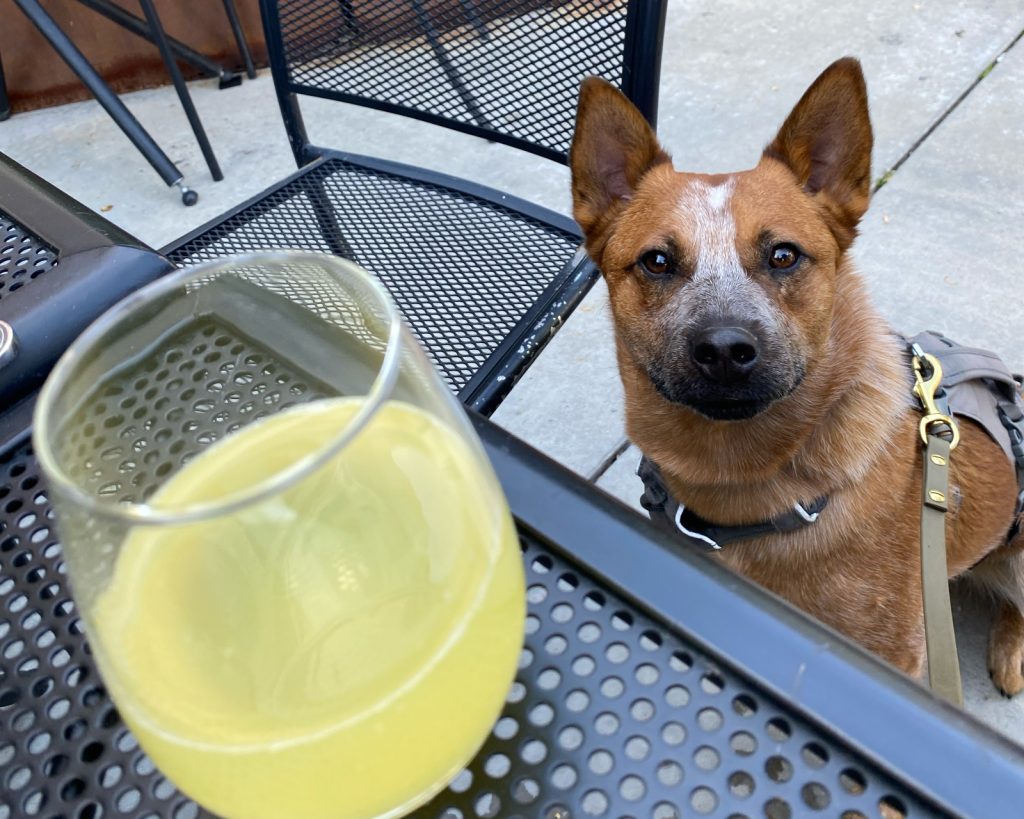Challenges and Solutions in Pet Training in Low-Income Environments

Understanding the Struggles of Pet Training
Pet training can be a daunting task in any setting, but in low-income environments, specific challenges arise that complicate the process further. In countries like Nigeria, where economic pressures can be overwhelming, many pet owners find themselves grappling with unique barriers that hinder the training of their beloved animals.
- Limited resources: Access to training materials, professional trainers, and veterinary services is often inadequate. Many pet owners in low-income neighborhoods may not have the funds to hire certified trainers or attend classes. As a result, they often rely on word-of-mouth tips from friends or family, which may not be comprehensive.
- Community support: There may be fewer community programs available to assist with training or socialization. While larger cities might offer pet clubs or community workshops, rural areas often lack the necessary infrastructure to support such initiatives, leaving owners to navigate pet training alone.
- Time constraints: Individuals may be juggling multiple jobs or family responsibilities, leaving little time for effective training. A single mother working two jobs may find it incredibly challenging to devote time to training her dog, resulting in behavioral issues that could have otherwise been addressed.
Moreover, many low-income pet owners may face financial limitations that hinder their ability to invest in proper training. The economic realities mean that a pet becomes an additional burden, often pushing training to the back burner.
- High costs of training classes: Many formal training programs are unaffordable for those living paycheck to paycheck. This reality can lead to a reliance on harmful training methods that may escalate behavioral problems.
- Lack of affordable training supplies: Items like leashes, collars, and treats can become luxuries rather than necessities. While a basic collar may seem inexpensive, the cumulative cost of training tools can strain already limited budgets.
- Inconsistent training environments: Frequent moves or unstable living situations make it hard to maintain training consistency. In urban areas, the high turnover rate of housing can contribute to a dog’s anxiety and confusion, further complicating the training process.
Despite these hurdles, numerous solutions can help address the challenges of pet training in these environments. Community engagement and grassroots efforts have shown promise in creating support systems that foster responsible pet ownership.
- Local workshops: Offering low-cost or free training sessions facilitated by volunteers can provide pet owners with valuable skills and knowledge. Such initiatives can help build a sense of community while also enhancing the bond between pets and their owners.
- Online resources: Accessible tutorials and guides that pet owners can follow at home are invaluable. Websites and social media channels can become platforms for sharing training tips and success stories, encouraging engagement and participation.
- Collaboration with schools: Incorporating pet education into community programs can foster responsible pet ownership from a young age. By teaching children the basics of animal care and training in schools, communities can cultivate a generation of informed pet owners.
Exploring these topics and potential solutions can empower pet owners in low-income environments to nurture well-behaved companions, despite their circumstances. By leveraging community resources and embracing innovative training strategies, every pet owner can contribute positively to their pet’s behavior and well-being, ultimately enriching both their lives and their surroundings.
CHECK OUT: Click here to explore more

Barriers to Effective Pet Training in Low-Income Areas
The landscape of pet training in low-income environments, such as those found in many parts of Nigeria, presents a myriad of barriers that can complicate the learning process for both pets and their owners. Understanding these barriers is crucial, as they significantly impact the capacity to train and socialize pets effectively.
- Lack of Access to Professional Training: In many low-income neighborhoods, qualified dog trainers may be few and far between. Without access to professional help, pet owners often resort to unreliable methods passed down informally through friends or family. This reliance on anecdotal advice frequently leads to inconsistent training results and can exacerbate issues if the methods employed are ineffective.
- Insufficient Knowledge of Positive Reinforcement: Many pet owners may not be familiar with the principles of positive reinforcement, which could guide effective training techniques. Instead, they might rely on traditional punitive methods that can harm the human-animal bond. Numerous studies have shown that positive reinforcement strategies are more effective and foster better behavior. In areas where educating owners about such methods is lacking, miscommunication and misunderstanding can prevail.
- Community and Environmental Factors: The social fabric of low-income neighborhoods often lacks structured support systems for pet owners. While a wealthy suburb may have a well-organized pet training community, rural or economically-challenged areas might struggle to find local support groups or organizations dedicated to pet care and behavior. This disconnect leaves many owners feeling isolated in their efforts to train their pets.
Furthermore, the financial implications of pet ownership and training cannot be overlooked. For many low-income families, pets may not be seen as a priority compared to pressing financial decisions. These economic pressures further complicate the training landscape:
- Affordability of Training Programs: With many formal training classes charging fees that can be daunting for those living paycheck to paycheck, pet owners might be compelled to forgo professional help. A lack of affordable programs means that behavioral issues may remain unaddressed, leading to more significant problems down the line.
- Cost of Training Supplies: Even essential training supplies, such as basic collars, leashes, and treats, can weigh heavily on a limited budget. The assumption that training supplies are readily available may not hold true when the costs start to add up, forcing owners to seek out alternatives that may not be as effective.
- Instability in Living Situations: For many families living in low-income environments, housing instability is a stark reality. Frequent moves can disrupt a pet’s training, leading to confusion and anxiety for both pets and owners. The lack of a stable training environment can significantly affect a pet’s ability to learn consistent commands and behaviors.
As the challenges mount, it becomes clear that innovative solutions are needed to break the cycle of ineffective pet training. Recognizing the distinctive barriers faced by pet owners in low-income environments is the first step toward creating sustainable training frameworks that can foster positive relationships between owners and their pets.
Challenges and Solutions in Pet Training in Low-Income Environments
Training pets in low-income environments presents a unique set of challenges that can hinder effective communication between owner and animal. Often, these settings lack the resources necessary for formal training classes or professional help, leading to reliance on self-teaching methods that may be less effective. High noise levels, limited space, and distractions from the environment can overwhelm both pet and owner, severely impacting the learning process. This context necessitates a tailored approach to pet training that considers both the emotional and physical conditions surrounding the learners.
| Category | Advantages |
|---|---|
| Resourcefulness | Utilizing common household items enhances engagement and creativity. |
| Community Support | Engaging with local groups fosters shared knowledge and encouragement. |
By harnessing resourcefulness, pet owners can create a positive and enriching training environment without the need for expensive tools or classes. Community support provides another avenue for developing training techniques that resonate within low-income neighborhoods. By sharing insights and experiences, pet owners can discover innovative solutions that are both practical and effective.
Furthermore, adapting training methods that work well with specific environments allows for greater flexibility. Techniques that are less reliant on external factors, such as noise or space, can lead to successful training outcomes. Additionally, using simple commands, positive reinforcement, and patience can help to nurture understanding and cooperation between pet and owner. In turn, this builds a stronger bond that fosters lasting behavioral changes.
ADDITIONAL INSIGHTS: Expand your understanding here
Innovative Solutions for Pet Training in Low-Income Areas
While the challenges faced by pet owners in low-income environments are substantial, innovative solutions have begun to emerge, driven by community involvement, education, and technology. These strategies are crucial for making pet training accessible and effective for all.
- Community-Based Training Programs: One promising approach to combat the lack of access to professional trainers is the establishment of community-based pet training programs. These initiatives can be organized by local animal shelters, veterinary clinics, or community centers, providing practical training sessions at little or no cost. By leveraging the skills of local volunteers who are experienced with animals, these programs create a supportive environment that fosters learning. For instance, successful ventures in communities like Lagos have shown that peer-led training sessions can empower pet owners and dramatically improve the behavioral outcomes of pets.
- Workshops on Positive Reinforcement: Educating pet owners about positive reinforcement is a powerful method to elevate training standards. Workshops can introduce low-income families to effective, science-backed training techniques that avoid punitive measures. These workshops can be offered free of charge in public spaces or via online platforms, allowing greater participation. Moreover, incorporating local languages and dialects into these educational materials can enhance understanding, ensuring that even those with limited English proficiency can benefit.
- Resource Sharing Platforms: The creation of online and community-based resource-sharing platforms can bridge the gap of accessing training supplies and knowledge. These platforms allow experienced pet owners to donate old training equipment or share resources like training videos and guides. Furthermore, initiatives like “borrow-a-toy” programs can help alleviate financial strain by enabling owners to access the necessary tools without significant expenses. Such communal efforts not only alleviate financial burdens but also foster a sense of togetherness among pet owners.
- Utilizing Social Media for Awareness: The power of social media cannot be underestimated. Campaigns that utilize platforms like Facebook, Twitter, and Instagram can raise awareness about the importance of pet training and available resources in local communities. Organizations can create engaging content that educates pet owners about training techniques, responsible pet ownership, and the significance of socializing pets, tailored to the specific challenges faced in low-income regions.
- Mobile Vet and Training Services: Mobile veterinary services that also offer training solutions represent a promising delivery model for low-income households. These teams not only provide veterinary care but also extend training sessions in familiar, comfortable environments for pets and their owners. This approach reduces the stress associated with transporting pets and can significantly enhance training outcomes.
Combining local resources with innovative outreach methods can transform the landscape of pet training in low-income environments. Each of these solutions addresses the unique barriers pet owners face while fostering a stronger human-animal bond. By tapping into community spirit, leveraging technology, and offering targeted education programs, low-income neighborhoods can cultivate environments where pets and their owners thrive together.
RECOMMENDED: Check out this similar article
Conclusion
The challenges surrounding pet training in low-income environments are indeed multifaceted, requiring a comprehensive approach that takes into account financial constraints, limited access to resources, and varied educational backgrounds. However, the innovative solutions emerging from community-driven initiatives, educational workshops, and online resource sharing present a beacon of hope. As demonstrated through successful models in cities like Lagos, grassroots efforts can significantly elevate training standards and foster better behavioral outcomes for pets.
Moreover, addressing the issue through platforms like social media not only raises awareness but also empowers pet owners with knowledge and support previously deemed inaccessible. By promoting positive reinforcement techniques and building communal ties, these solutions enhance the bond between pets and their owners, ultimately leading to healthier and happier animals and families.
Ultimately, as we continue to explore the intersection of social responsibility and animal welfare, it is essential for local governments, NGOs, and the private sector to collaborate in providing more comprehensive resources tailored to the needs of underserved communities. By prioritizing pet education and training accessible to all, regardless of economic standing, we can pave the way for an environment where pets and pet owners alike can thrive. Investing in these initiatives not only enhances the quality of life for cherished companions but also elevates community cohesion and awareness surrounding responsible pet ownership.


